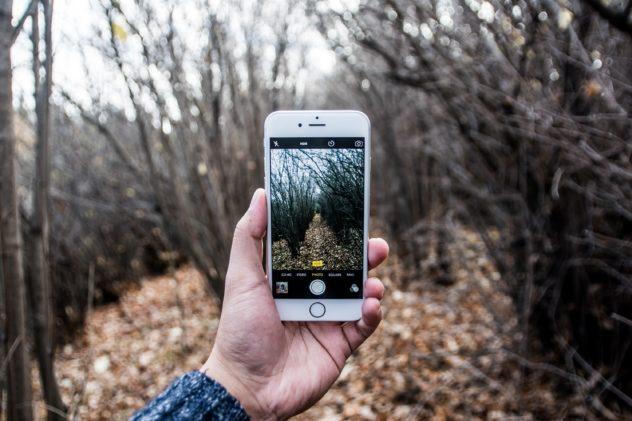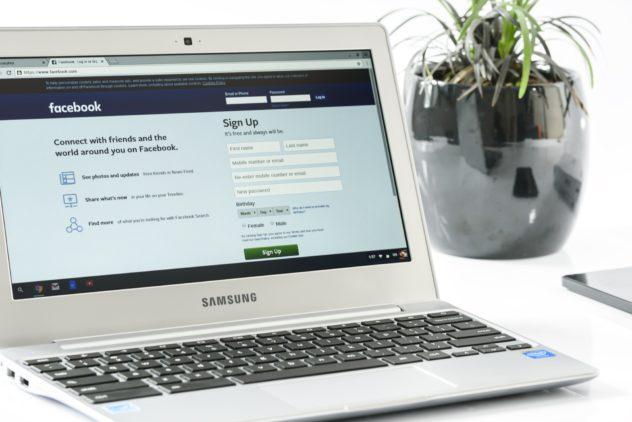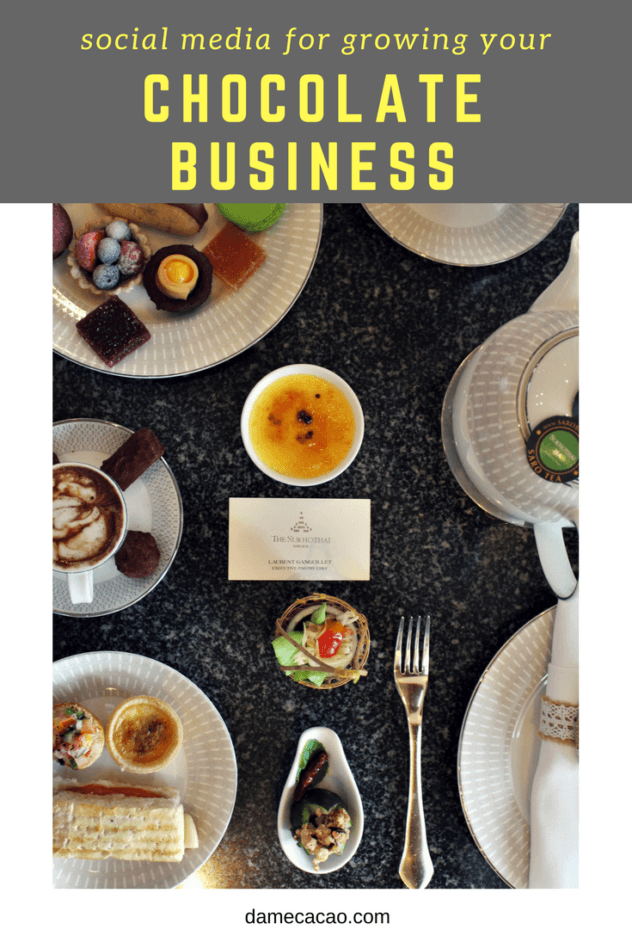We've all had this experience. You find a delicious product and devour it whole, but when you go looking for more you come up empty handed. You headed for Google, and ah ha! The company's name pops up in a couple of reviews, but the trail soon goes cold. This is where you give up.
That exact process happened to me just last week, and it's an absolute shame. When a company has no discernible online presence, not only does it impact potential sales, but the company's trustworthiness takes a huge hit (Do they exist anymore? Was it only available at the farmer's market? Who doesn't have an Instagram these days?).
To stop this from happening to your own chocolate business, follow the tips below for how to effectively use social media as free advertising for your business. A warning: it doesn't have to cost you money, but it will take time.
From Instagram and Pinterest to Twitter and Facebook, the digital age is here, and it's time to join the ranks.

5 Tips for All Social Sharing
Let's start today's lesson with some general do's and don'ts for any & all social networks. Even though each one has its own appeals and strengths & weaknesses, there are common threads between them all.
Share quality content, especially when it's your own. Your image as a brand is at stake, and you want to be trustworthy and reliable for your customers. Don't just post and re-post your own content, either, but share others' work.
Share in their accomplishments. Keep the human aspect of your business at the forefront, because people want to follow other people on these channels, not a bunch of sharing robots.
Post consistently. Your followers want to know when you will be posting the specials of the day or your seasonal products or your weekly blog posts. Know when they're online. Make sure they can accurately guess when they'll see a new post or pin or tweet, and fulfill their expectations every time.
Know your audience and their likes & dislikes. Take note of which posts get the most interaction, and continue sharing this kind of content, while still experimenting with new stuff that might interest them. Don't just post what you like, because the platforms aren't just there to amuse you. You're a creator, so think of your audience.
Craft a good bio for each network. Include your location, product focus, and your website or other social networks. I loathe finding an account with great content but then having no idea where they make products or how to buy them.
Don't try to be the best at every social network; that is exhausting and unnecessary. Learn how to use each of them and maintain a brand presence there. But before you do that, decide which 1 or 2 networks are most fun for you and most useful for getting your message out there.
Make it a point to be very active on them. In staying with the above rules, post consistently once or twice a week on the other networks, but don't worry too much about them.
For instance, you'll note that while I have a Twitter, it's not the most active, and I schedule most Pinterest and Facebook in advance. Instagram is my chosen network, and I'm on it for up to a few hours a day.

What is Instagram Good For?
Above all, Instagram is a visual tool for presenting a timeline of your or your company's lives. But it's also becoming a search engine and shopping platform, as well as a way to share videos and connect with others in your field.
When I'm seeking chocolate makers or chocolatiers in a new city, I use specific hashtags to find them. If I'm looking for new foods to eat or things to do, even in my own town, I check with my real friends and my Instagram followers.
The demographics tend to be younger, but with roughly 2 billion users, this is an app for global and local reach. Think of it as an online portfolio of your offerings rather than a tunnel towards selling your products.
What Do Users Want on Instagram?
In short, good photos with personality in the caption & behind the lens. Perusers will stop or slow down for visually appealing and relevant photos. People follow others who post about topics they like: golf, craft beer, make-up, etc.
But they tend to be more engaged if there's a human element to a profile. My friends, largely in their early twenties, usually click on the app when they're either bored or looking for something to do in a specific place. Aesthetics are key here.
Once you've gotten their attention with a nice photo, secondarily people will read engaging captions— tips, stories, and jokes related to what's depicted in the picture.
Instagram Best Practices
- Use hashtags. You're allowed up to 30 of them, but you certainly don't have to use them all. Hashtags are like a topic marker, and some have bigger followings than others, but they're a major way in which people discover your profile and brand.
- Use locations on your photos, especially the location of any brick and mortar stores you sell at.
- Write engaging captions on your photos. Try asking relevant questions at the end, if it feels natural. Be an interesting place or person, and people will be interested in your brand.
- Post on Instagram stories. This keeps you near the top of people's feed and minds, and you can now highlight your best stories at the top of your profile.
- Make use of Reels. Now is the time to add video content if you haven't already started. From the huge incentives Instagram is offering to creators making their first Reel, they are investing big in video posts. For you this translates into them automatically showing any of your video posts to more people than they would show a simple image post, giving you a small boost just for changing mediums.
- Go with the flow of the algorithm. Instagram is notorious for changing its algorithm every month or so without explaining anything. Play around with any new features and figure out how to use them while everyone else is complaining. Go with the flow, because eventually the current will bring you along anyway.
What is Facebook Good For?
Facebook has largely become a resource for information on companies, and a place to sell products. Companies have molded Facebook into the place where a business's basic information is recorded for the world to see, reviews and all.
Even if a company doesn't want a Facebook account, once enough users have submitted data about a particular place, one is created for them. You can choose to take it over, or just let it whither away; either way it is one of the many faces of your business.
User demographics are all over the place, so most any market can be catered to for click-throughs on Facebook.
What Do Users Want on Facebook?
This depends on your demographic, but people basically just want to be entertained. Videos in particular do well, but also photos, articles, and visitors' posts are just some of the ways to keep a solid page and resource.
When scrolling their feed, people give time to and click on the images or words which catch their eye. Share content relevant to your niche as a chocolate business, and you've got happy followers.
Facebook Best Practices
- Share videos and pictures of everyday life at work, accomplishments, your creative process, and more. Experiment with what content people find the most interesting, and post more of that.
- Keep a consistent aesthetic on your page and in the various sections. Maintain a relevant About section, cover photo, profile picture, and photo section. People truly judge a book by its cover, whether they realize it or not.
- Ask followers for their opinions, especially on big changes. These can be to your packaging, location, new products, ingredient sourcing, or even just trends. Keep it fresh, and keep people engaged. When they pass by your shop, you want them to stop in and want to support your business because they feel like they know you.
- Experiment with ads on Facebook. Since I don't sell anything, I've only ever used ads on Facebook in experiments I do for other websites I run, and they've only ever been use to try to grow traffic. But when I worked in a chocolate shop in Guatemala a few years back, the owner used Facebook ads every day and it drove online sales like crazy. I know fellow writers & business owners who have done the same and been able to attract a decent following because of it.
- Utilize Facebook live & stories. Just like with Instagram, embrace the changes in the algorithm, because there's no going back. At first, just try to post once a week and see how followers react. Social media is all just one big experiment in the end, and each one of us is a guinea pig.

What is Twitter Good For?
Twitter is for conversation and personality. People share photos and articles, but for the most part they share their thoughts and accomplishments. If you primarily use Twitter, you need a strong voice and a knowledge of the trends. Like Facebook, Twitter has a huge range of demographics, and those user groups each see the platform in a different way.
What Do Users Want on Twitter?
Older people tend to use it to network and keep updated on politics, while younger people air grievances with brands and friends alike, and keep up to date on trends and politics. People who follow you on Twitter will do so because they know you, or like the personality you share in your tweets, re-tweets, and bio.
If you're in the chocolate business, be sure to follow big names in the industry both globally and locally. Share photos from your operations, qualms or questions about future ventures, and re-tweet relevant articles and quotes. Be entertaining.
Twitter Best Practices
- Don't follow/unfollow users just to gain a higher number of followers. This is dishonest and hurts your brand, because people do notice. There's an app for that.
- Don't just re-tweet others, and try not to remain inactive for more than a week or so (hands up if you've done this, but will never again after reading this article). There are tools nowadays which can schedule relevant tweets and follow people as your account. Just don't abuse them.
- Respond to others' tweets. Be engaging and social while you're online, and maintain a positive personality. It really does shine through on your profile and in your aesthetic.
- Use but don't over-use hashtags. Limit it to 1-4 hashtags per post, paying special attention to what is trending in your region & globally.
- Take advantage of the multimedia aspect of Twitter by posting short videos, pictures, and articles. Only putting your words up there tells people what you're doing, but users also want you to show them.

What is Pinterest Good For?
Pinterest is a visual search engine. Users pin pictures (with attached links) to different boards. This means that visually-oriented businesses looking for a way to funnel traffic to their site, or even their other social networks, would do well to invest in a Pinterest marketing course or virtual assistant. You can pay to promote pins and reach a larger audience, as well as sell products through Pinterest.
What Do Users Want on Pinterest?
Beautiful pins which lead to relevant content. People save these pins, which often have several related photos sewn together into one long mosaic. Since lots people use Pinterest to look for recipes, plan trips, and get lifestyle improvement tips, pictures of beautiful chocolate or how-to's which lead to a website or other network will be most well-received.
Pinterest Best Practices
- Create longer pins. These take up the most space on the site and will therefore be seen better.
- Cross-share with other networks. Yes, you can pin your Instagram posts and pictures from your own website. This can increase your visibility across social media and engage more people.
- Re-pin from others. About ⅘ of Pinterest is actually re-pins, like exact copes of others' content (still attributed & linked to their source material). This means that not only does pinning from other chocolate and business boards fluff up your account, but others could share your content if it's beautiful enough.
- Make group boards. Or join group boards, if you decide that Pinterest is the social tool for you. A group board allows you to crowd-source content for your Pinterest profile without you actually having to post on them. The more contributors, the more potential followers, and the more people who could see the content you pinned to the board.
- Use hashtags in your description. Yes, Pinterest also uses hashtags. Users have gotten used to them, so the search engine integrated them in the fall of 2017, and they act as a way to search for the newest content pinned with that hashtag attached. Simply add the hashtag in the description box of your pin, and users will find it while it's still new.

Further Reading
There is indeed a social network for everyone, even those chocolate people who are less visually-inclined. So whether you spend an hour a week or a few hours a day building an online following, the time to build your online presence is now.
This is only the first in a series of chocolate social media tips, so stay tuned for the next installment, all about Instagram. For now, snag a cup of coffee or cocoa and sit down for a few more lessons. Here are some of my favorite books on entrepreneurship, chocolate, and business, sometimes all in one!
Books for Every Skill Level
For Instagram // Instagram For Business For Dummies (no offence) is the in-depth introduction to Instagram that you were looking for. No more pictures of your cat taken in fluorescent lighting on your Instagram. Oh, no. Learn how to attract potential customers, create effective contests, and design winning Instagram ads.
For Facebook // The Ultimate Guide to Facebook Advertising offers an in-depth look at how to set up your brand's Facebook, from aesthetics to when to post and running ads. With over a billion users, it pays to play (or does it pay to pay while playing?) on the largest social network.
For Twitter // Mark Schaefer's The Tao of Twitter gives insight into building relationships and connections via Twitter. As a personal voice-centric platform, it is increasingly important to have a style which people relate to and want to connect with. Engage with potential customers and others involved in chocolate through a quality approach to Twitter.
For Pinterest // Dr. Jason McDonald has it figured out is his Pinterest Marketing Workbook. With so many users viewing Pinterest as a search engine, it's important to be able to found and desired on the platform.
Pinned and saved for later are delectable desserts and restaurant-quality recipes, and your chocolate bars and bonbons could b a part of that, if you decide that Pinterest is your platform of choice.
For the Basics // Likeable Social Media by Dave Kerpen is an in-depth discussion of how each social media site we've discussed works, and how it can best be used to maximize your business's profits without costing you a big chunk of change.
For Crafting your Approach // Gary Vaynerchuck is a social media expert I've been following for a long time. His book Jab, Jab, Jab, Right Hook changed the way I approached my social media sharing, and is one of the reasons you were able to find this article.
For Cultivating Your Mindset // Dale Carnegie's classic How to Win Friends & Influence People is still relevant today, despite its pre-internet publication.
This book is an updated version divided into four sections, and the entire first half is focused on how you approach people and get them to like you. This is the key to social media, as people don't (usually) follow people they don't like.
For Remembering Why You Started // While not specifically about social media, in Meaningful Work, Shawn Askinosie walks readers through the process he underwent while building his business and finding his vocation.
If you feel like you're drowning sometimes in all of the things you "need" to do, take a moment and read through Shawn's masterpiece and remember why you got into the chocolate world in the first place. The book is also available in kindle version, which is how I read it.

Video Courses or Series to Up Your Game
We all learn in different ways. Over the last year or so, I've been taking several courses on Creative Live, a video-based education platform geared towards entrepreneurs like yourself. I've found several courses they offer to be the push and the insight I needed to take the next step and improve my approach to business.
You can view the beginning and he chapter & resource titles for everything included in each course. I've linked some of the most affordable and useful courses below, and if you use my link to enter the site, you & I both get $15 off of our purchases!
If you got some insight from my article, then I've done my duty, and I'd appreciate you supporting both of us by using my code.
Building A Memorable Brand by Carolina Rogoll // If you're just beginning your chocolate business, and working on getting it into the minds and hearts of customers, this is your first step.
Build a memorable brand and your fans will become your clients, but be aware, none of this is easy. You have a long road ahead of you, but the path can be smoothed with lots of advice and support from those who believe in you.
Social Media & Web Graphics by Erica Gamet // With over 30 years of experience in graphic design, Erica presents quality paid & free apps, detailed explanations, and examples of what quality graphics look like. This is the perfect course for upping your social media game and getting into the more pinteresting side of the social platforms.

Learning Food Photography by Andrew Scrivani // An Italian guy from NYC teaches you how he became one of the world's most well-known food photographers, and what to do to follow in his footsteps.
Learn how to choose a camera, how to frame your pictures, and how to use props effectively, even if you don't have your sights set on a career in professional food photography.
Successful Crowdfunding by Christopher Hawker // Directly from the notes of a professional inventor & crowd funder to your eyes & ears, this is the downlow on running a successful crowd-funded campaign.
It's more complicated than it looks, and Chris breaks it down from building your team and your page to contacting potential investors once the page goes live. And seriously, has anyone else heard of a more appropriate last name for an inventor than "Hawker"?
Viral Marketing & PR by Ryan Holiday // This class is not for everyone. Ryan Holiday has become infamous for his viral and unconventional marketing strategies, and he jumps right into it. This course covers storytelling, working with bloggers, crafting compelling human-centered ads, and more.

















Todd Lee
What a fantastic resource of information! For someone with little experience utilizing social media this has provided a great first look at what each has to offer and a pathway to learning more. I plan to utilize social media to help introduce my future business. Thank you for sharing and helping me learn how to successfully enter into the social media world.
Max
You're very welcome, Todd! I'm glad you found it helpful, and I wish you all the luck in the world on your future endeavor; I know it's tough to start your own business. Please keep me up to date on your business opening!